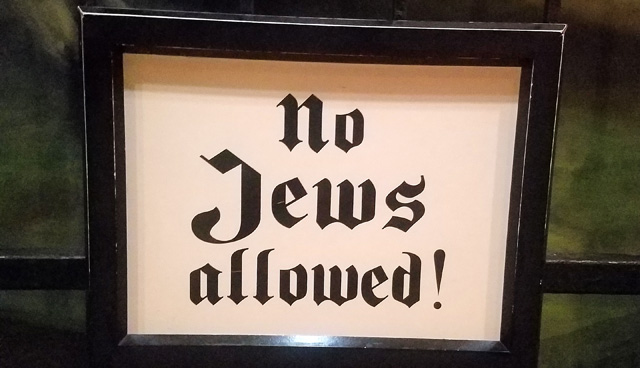Remember the Children: Daniel’s Story
 By Karina Rivera
By Karina Rivera
“I went to Washington, D.C. for a three-day leisure trip and never thought that a trip to a museum would change the way I look at life forever,” said Alvin Ortega, 21, a graduate student from John Jay College.
The United States Holocaust Memorial Museum, “an exploration of hate and hope,” preserves the memory of the persecution and murder of more than six million Jews by the Nazi during World War II. With a collection of artifacts, testimonials of survivors and simulations of camps and more, the museum takes visitors back into some of the most tragic years in history.
Every few months, different exhibitions are put together in the museum. This season, a new exhibition, called “Remember the Children: Daniel’s Story,” focuses on a little boy’s experience of the Holocaust and what he endured, along with his family.
“I came to this museum to show my daughters the history of a strong culture, what they experienced, what they endured and the pain they felt,” said Andrea Rodriguez, 28, a mother of two. “I think it is a great idea that the museum made an exhibit, primarily for children, in a manner that is not too graphic, but more of a story book setting with a harsh ending.”

The exhibit is designed to model Daniel’s home during the Holocaust. When visitors walk in, they come through a curtain that leads them to a video of Daniel explaining what visitors should expect as they walk through his home and the neighborhood he grew up in. Visitors make their way through a white fenced door as they hear the clatter sound of pots and pans in a simulated kitchen with sounds of children laughing and running around.
As visitors walk through Daniel’s kitchen, they step foot into his bedroom, consisting of a spring- like mattress and a pair of black shoes at the bedside. In this part of the exhibit, one of Daniel’s notes, which are the only form of text throughout this exhibit, read “They came to get us.” Next stop in the exhibit is a concentration camp setting, cold, filthy, and with a bob wire surrounding its edges. As visitors walk through, Daniel’s voice paints a picture of the nights he spent there with his father, because he had been separated from his mother and sister.
“The story was intense,” said Ortega. “Yes, the exhibition was designed for children, but as you walk through each room, it’s like you can feel the pain of a child. Imagine, an 8-year-old boy experiencing something like the Holocaust, it’s tragic.”
At the end of the exhibition, visitors are invited to post a note on a bulletin board of what they learned about Daniel’s family, the Holocaust, and to express their feelings or write down their thoughts about their personal experience. For the children, there is also a mailbox, labeled “Daniel’s Mailbox,” where they can drop in a note to Daniel, of words of encouragement, as if they were with him during that time.
“Learning about the Holocaust in school is not the same as experiencing it in the museum,” said Genesis Rivera, 15, a junior at St. Catherine’s Academy in the Bronx. “Hitler made sure to have every Jew suffer. He had concentration camps were they were kept to work or killed depending on their gender or race. Many would commit suicide to avoid being killed. They were given small portions of food or none at all. The prisoners were finally saved after four years of suffering by the Soviet Union army. It’s an incredible story.”
Saved under Culture, Featured Slide
